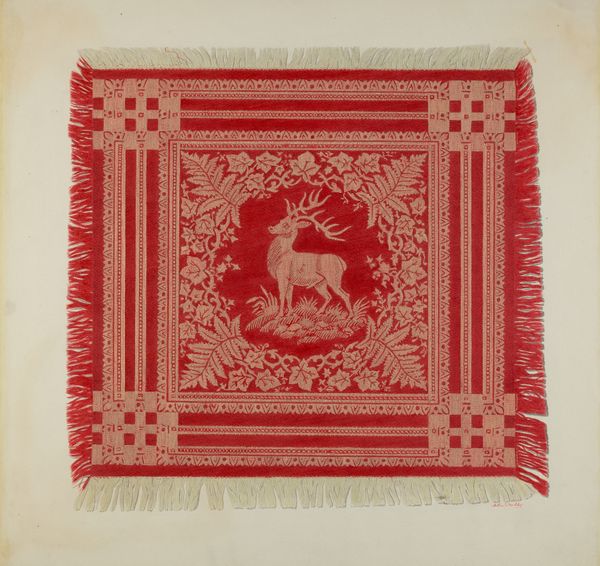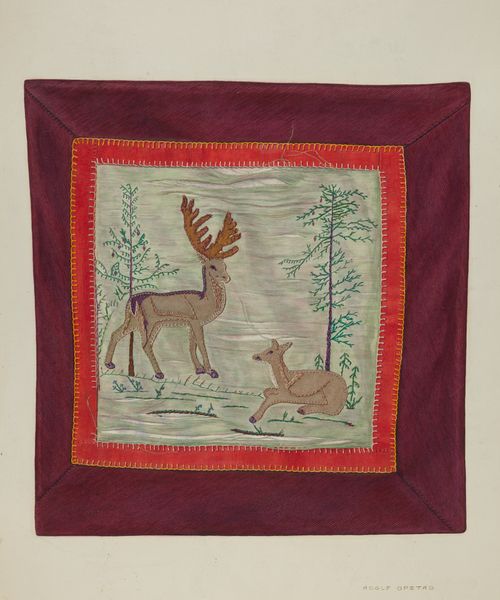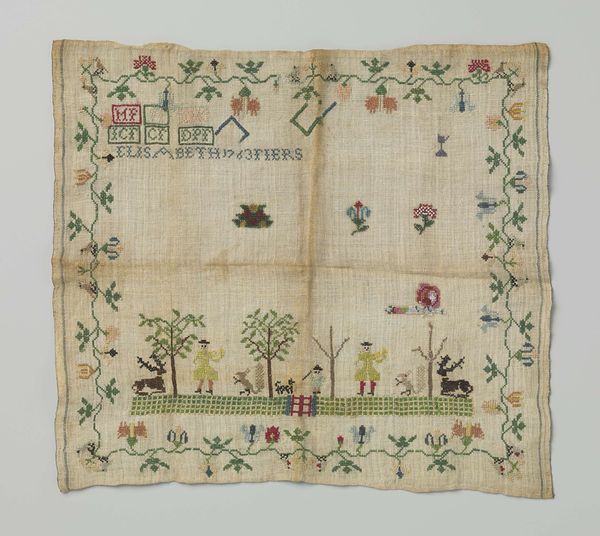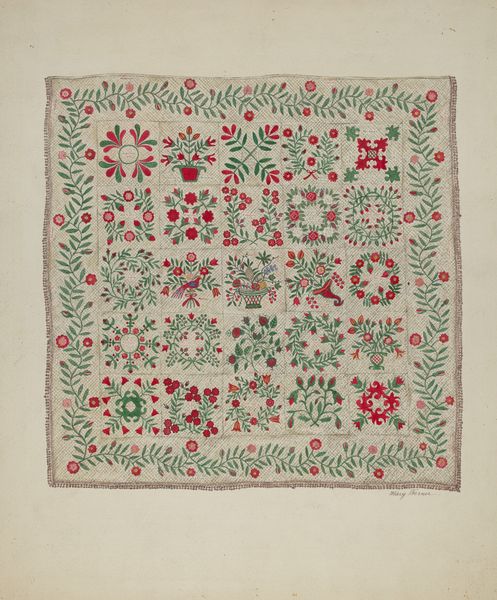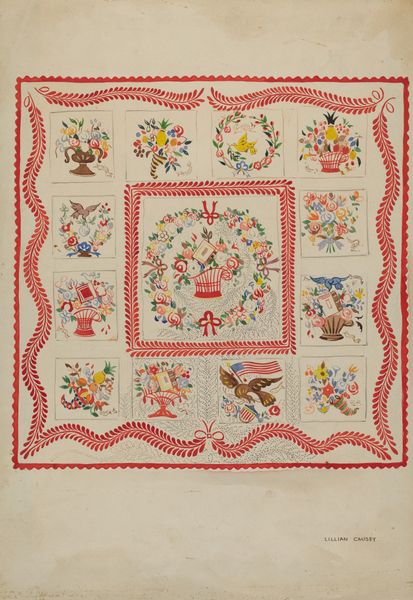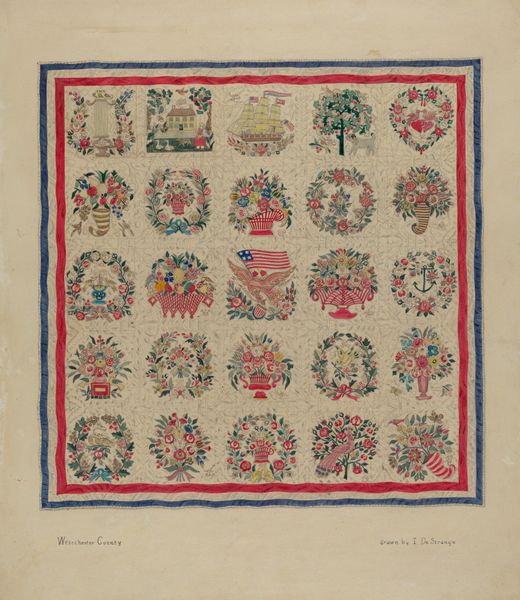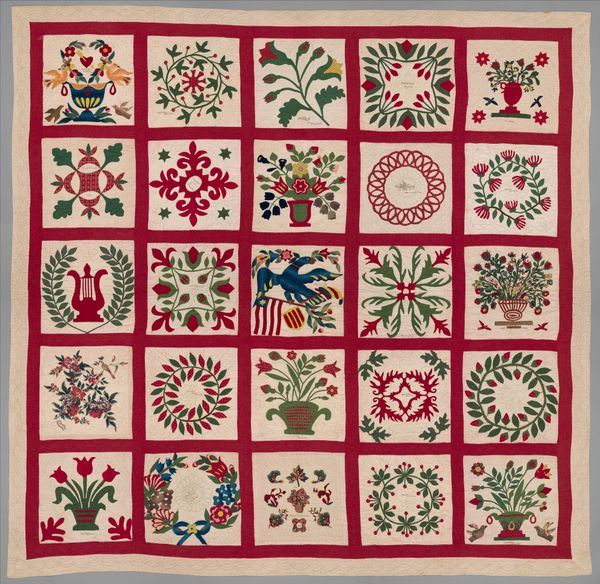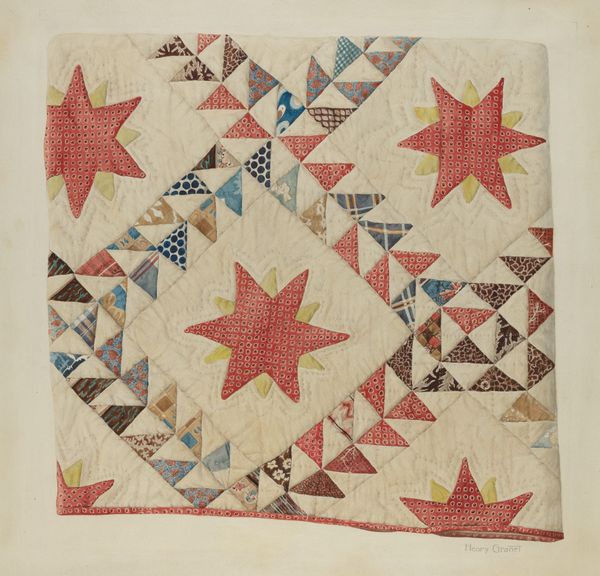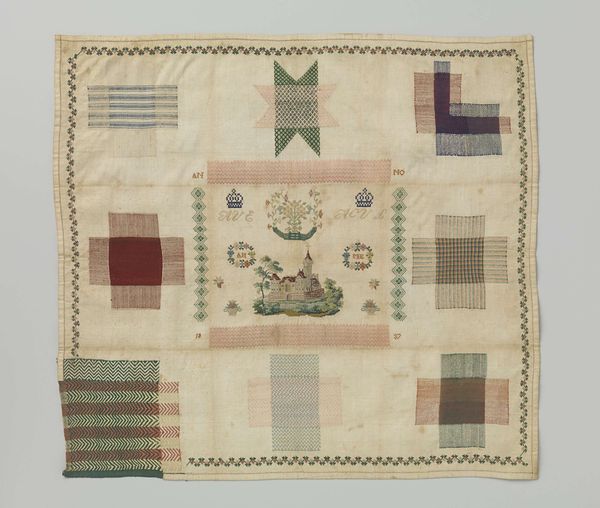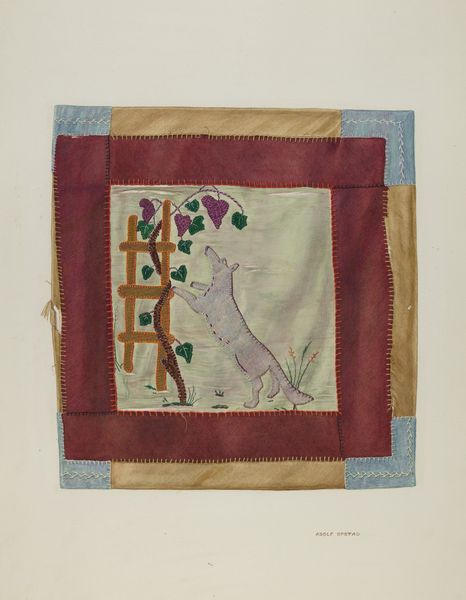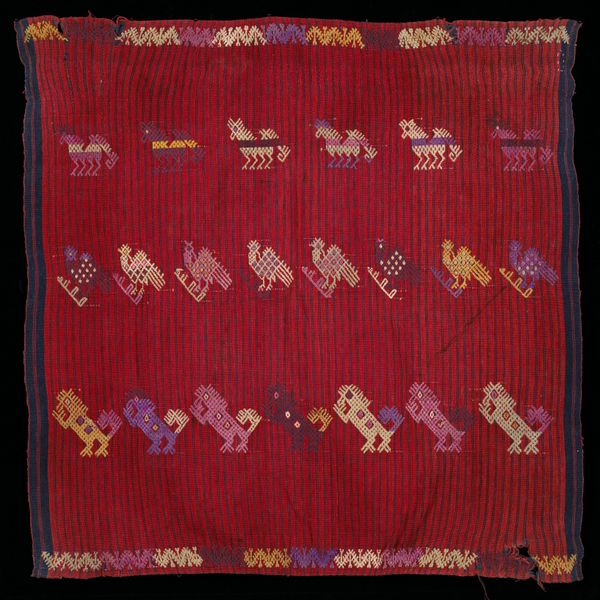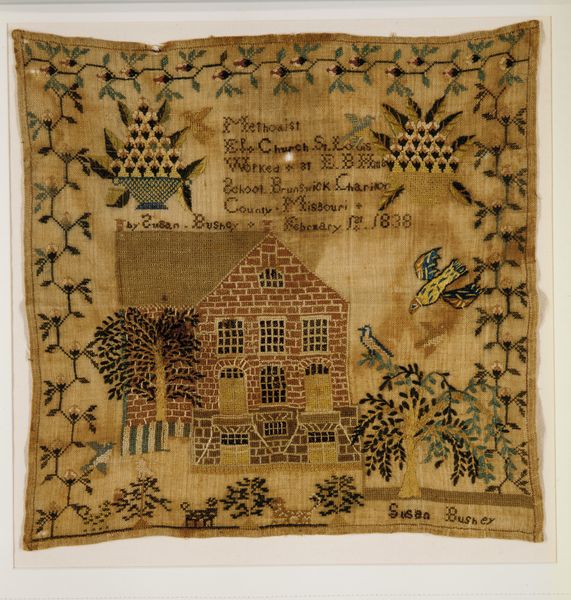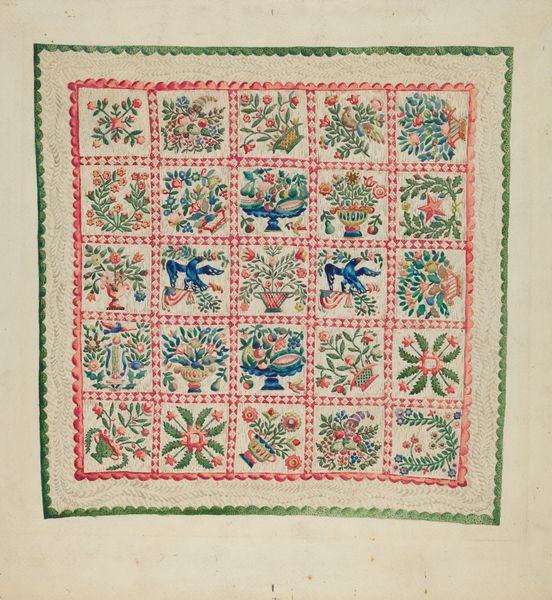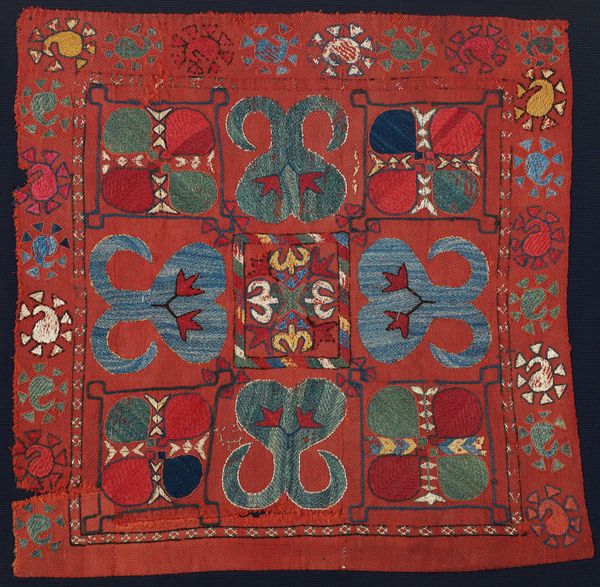
drawing, coloured-pencil, plein-air, watercolor
#
drawing
#
coloured-pencil
#
water colours
#
animal
#
plein-air
#
landscape
#
figuration
#
watercolor
#
coloured pencil
#
folk-art
Dimensions: overall: 28 x 35.5 cm (11 x 14 in.) Original IAD Object: 72" high; 72" wide
Copyright: National Gallery of Art: CC0 1.0
Curator: At first glance, this watercolor and colored pencil drawing seems deceptively simple. It’s titled "Afghan (detail)" and was created around 1937 by Ethel Dougan. Editor: There’s a disarming charm in the naiveté, a certain flatness in perspective, that almost gives it the character of folk art. I'm immediately drawn to the chromatic intensity—the sharp reds interspersed with naturalistic shades and details in the central equestrian figure. Curator: Ethel Dougan was quite involved in community arts initiatives; there's a real possibility that this "Afghan," or perhaps quilt panel, reflects those values of accessible, local art production during the 1930s. I suspect this piece had a very public facing intention. Editor: Let's not disregard the actual structure itself. Consider the layout: the central horse anchored by what look like canine and cervine depictions arranged around the frame, connected by blocks of what almost appears to be heraldic tinctures. Curator: Precisely, which might reveal aspirations to elevate humble themes using elevated language—perhaps ironically acknowledging societal roles, country versus city, the landed gentry versus the working class... Dougan lived in San Francisco... is that what the embroidered letters denote? Editor: Intriguing idea! The question becomes whether this is intentional commentary, and I find the appeal coming simply from this interplay between form and field. Look, you can read the fringe itself as another material framing device that almost separates the artistic scene, an encapsulation of color and craft as something “untouchable.” Curator: Fair enough, but I believe examining these designs as reflections of Depression-era social dynamics brings critical depth to what may first appear to be simply quaint decoration. This wasn’t necessarily art for art’s sake, even in the detail we see here. Editor: Agreed! Viewing the work as evidence within a complex and charged history certainly challenges more traditional art viewing frameworks and elevates what might seem purely formal components into a very vibrant expression of context.
Comments
No comments
Be the first to comment and join the conversation on the ultimate creative platform.
